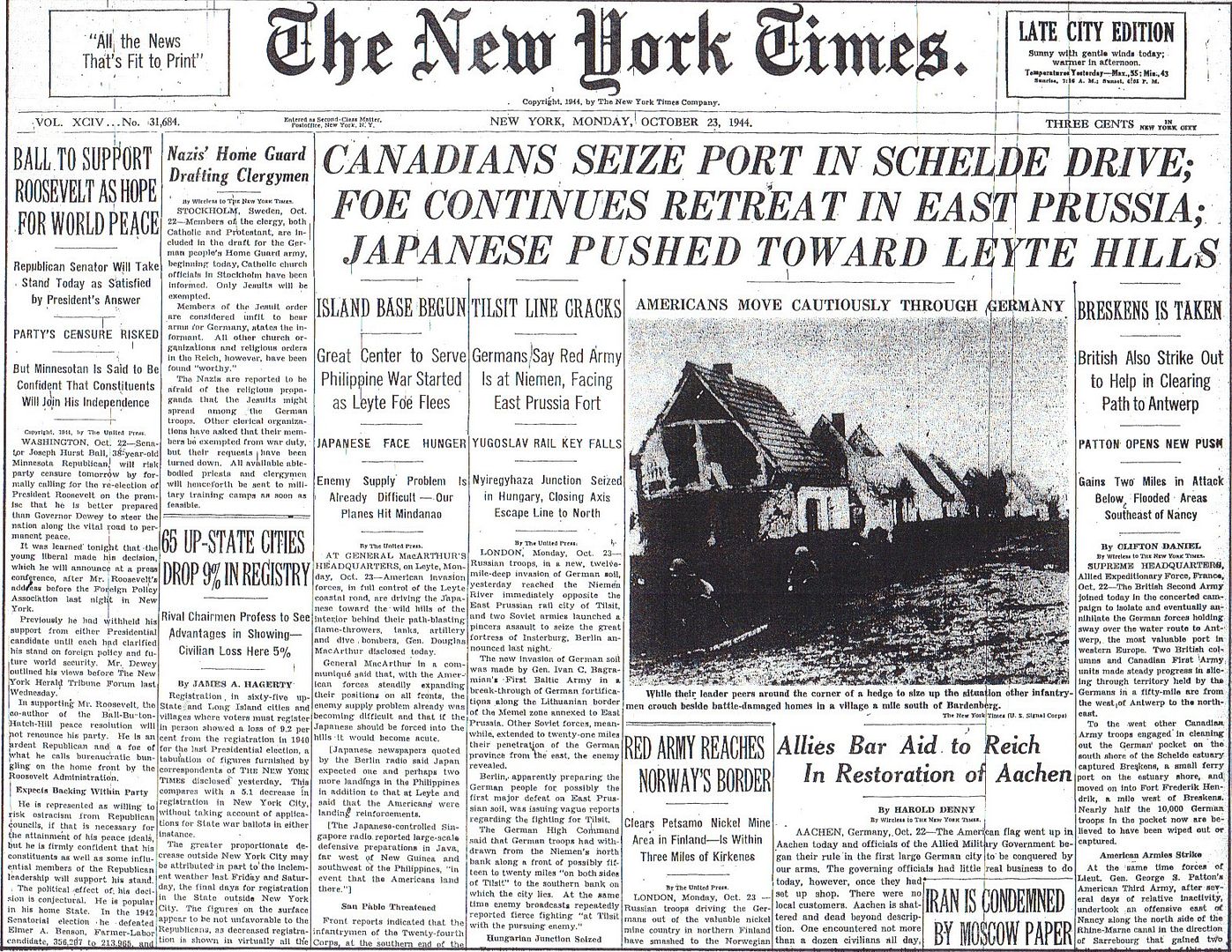
Posted on 10/23/2014 4:20:09 AM PDT by Homer_J_Simpson

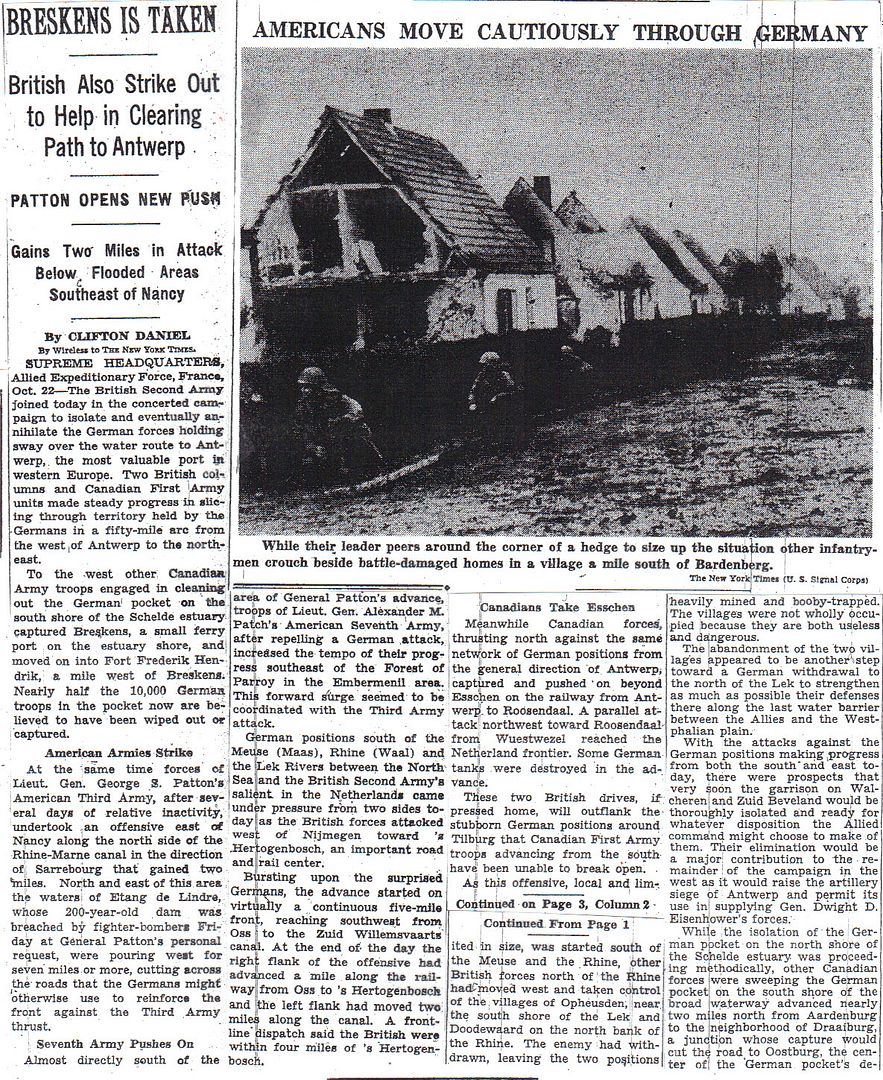
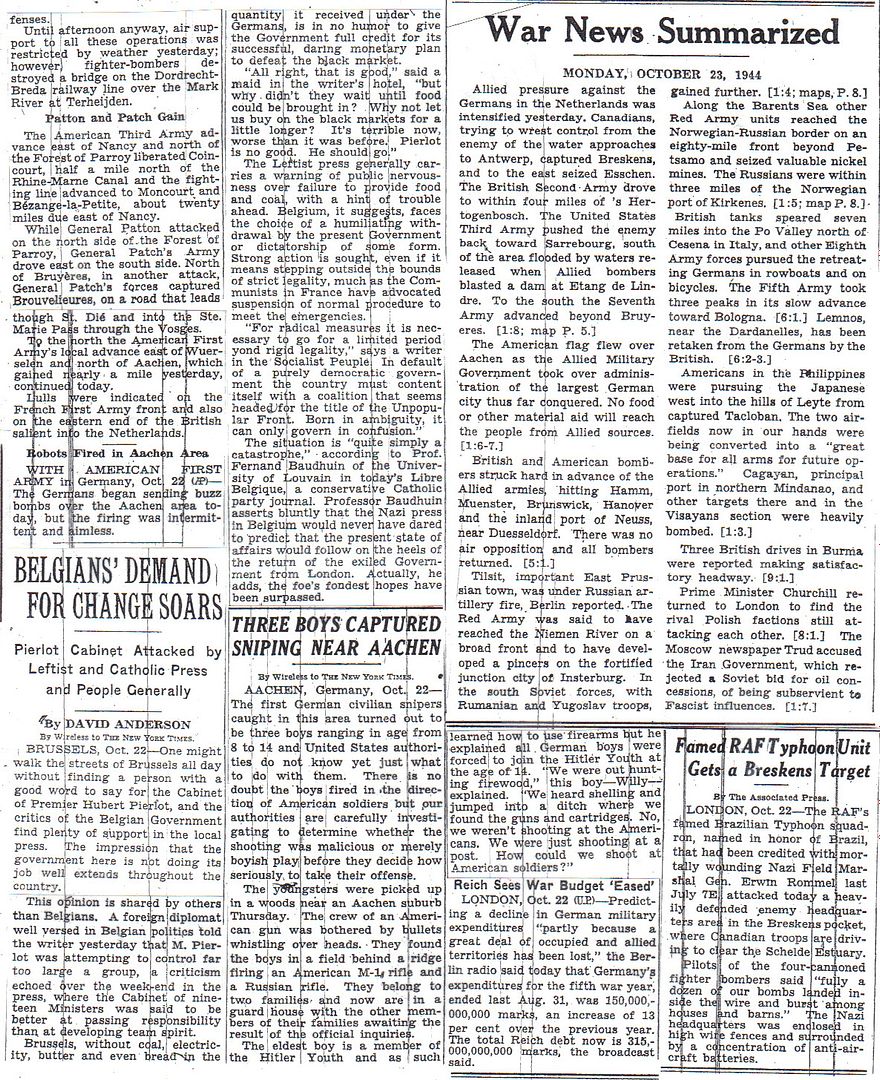

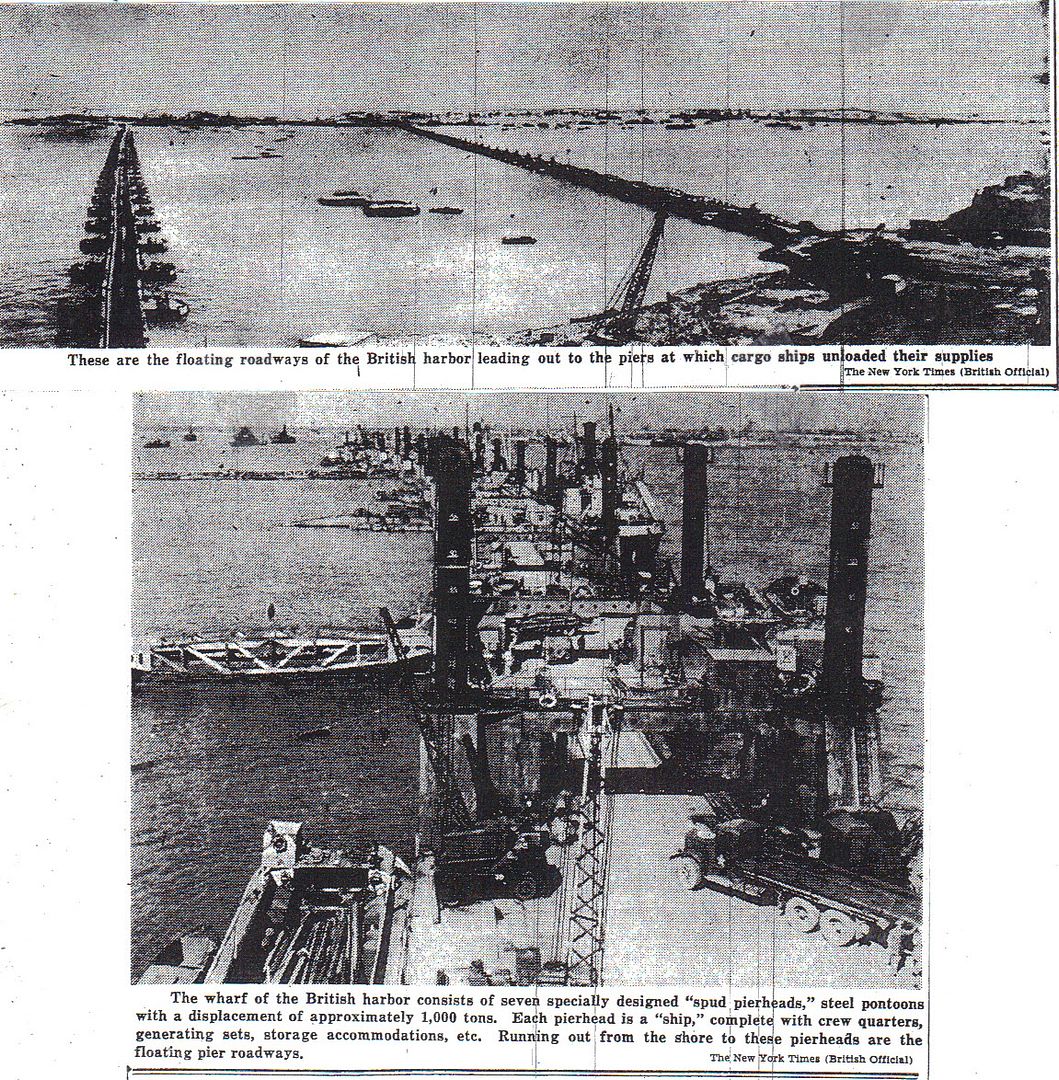
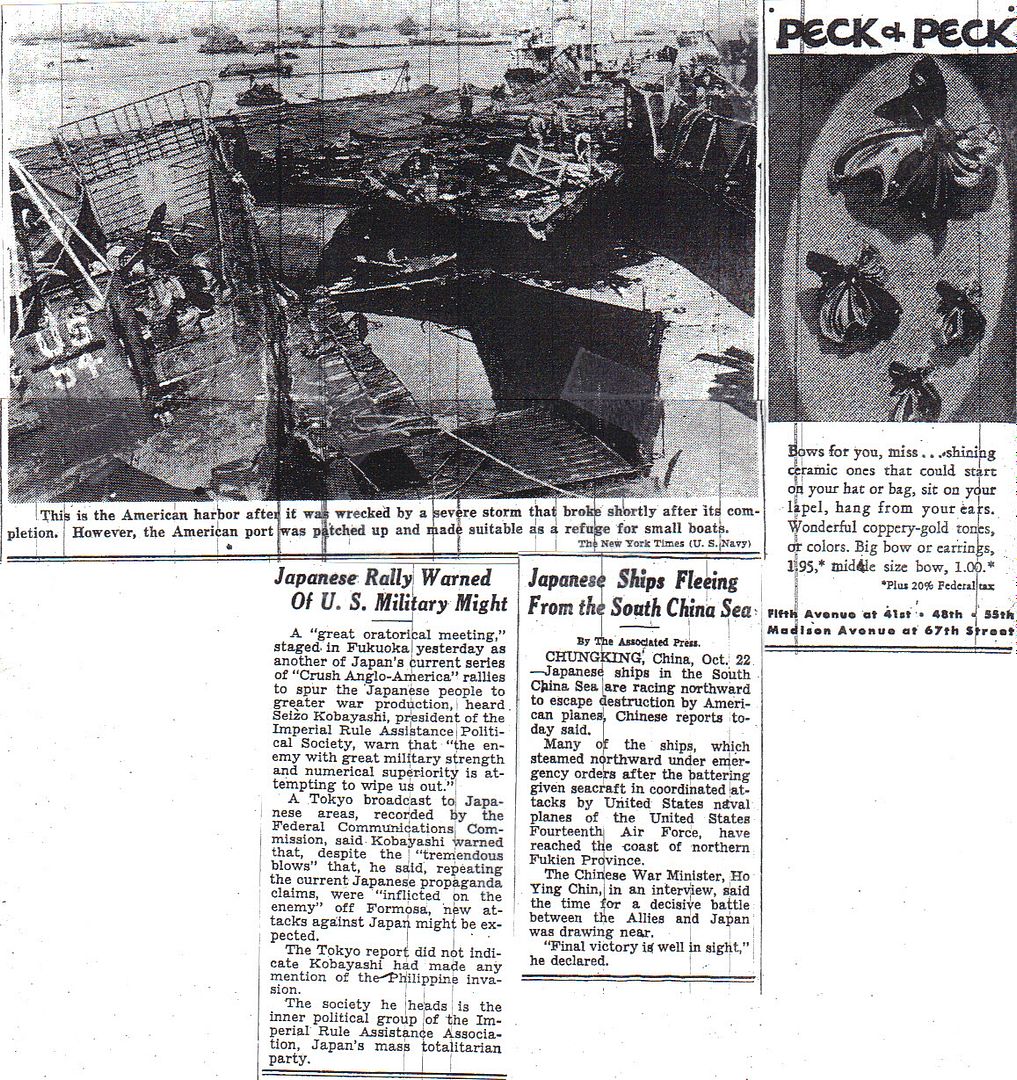
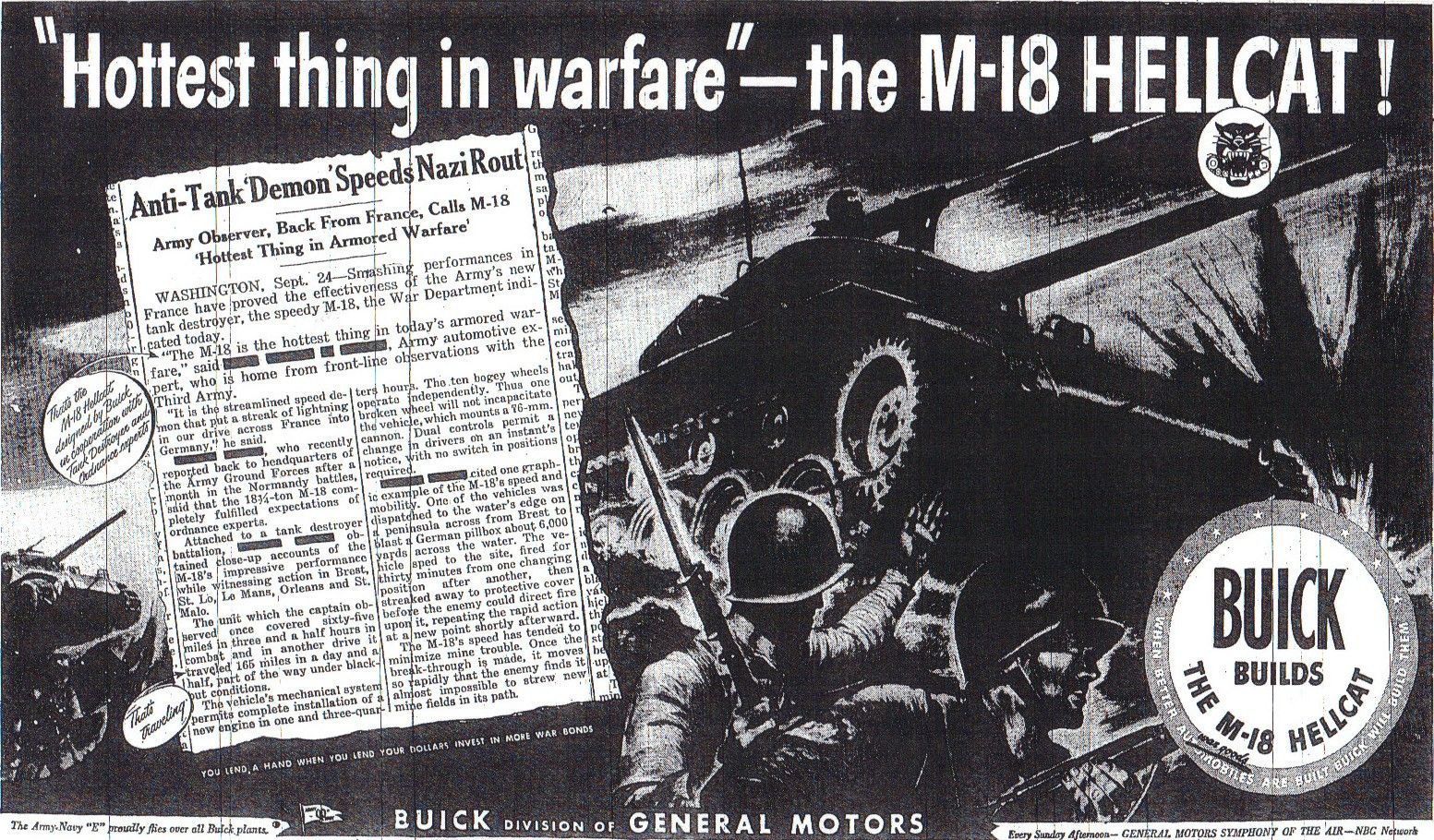
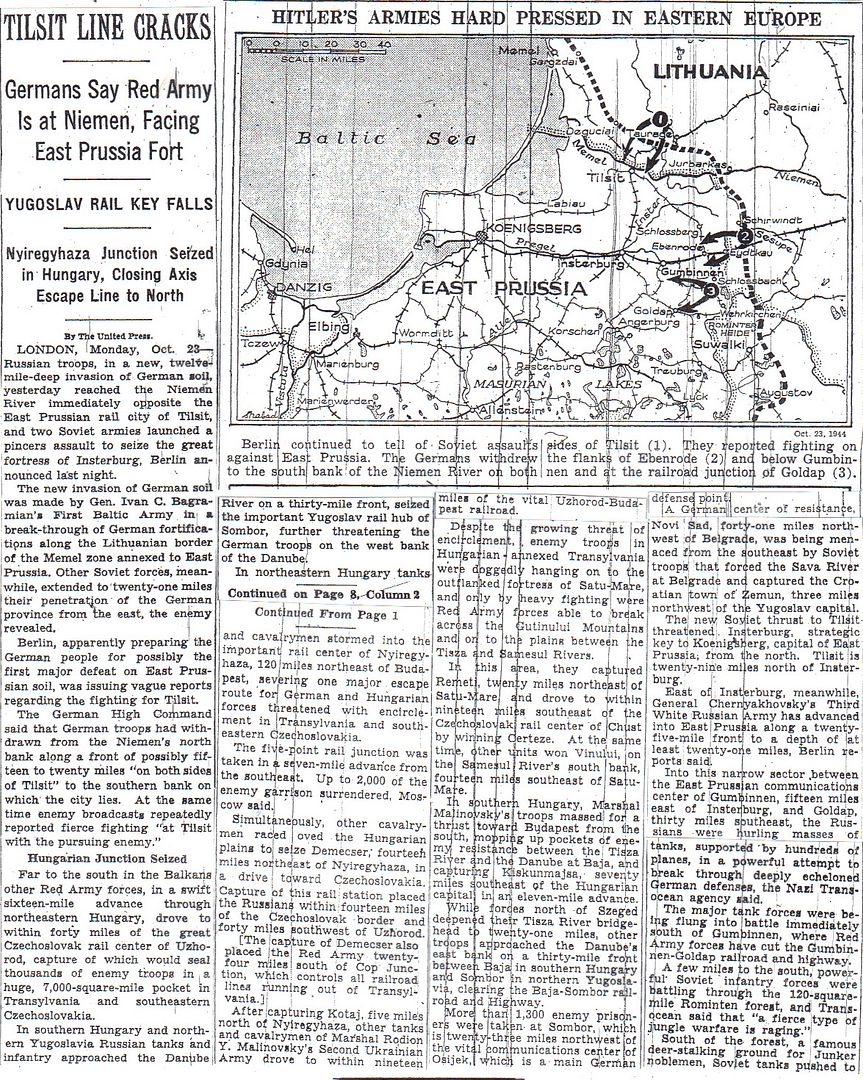
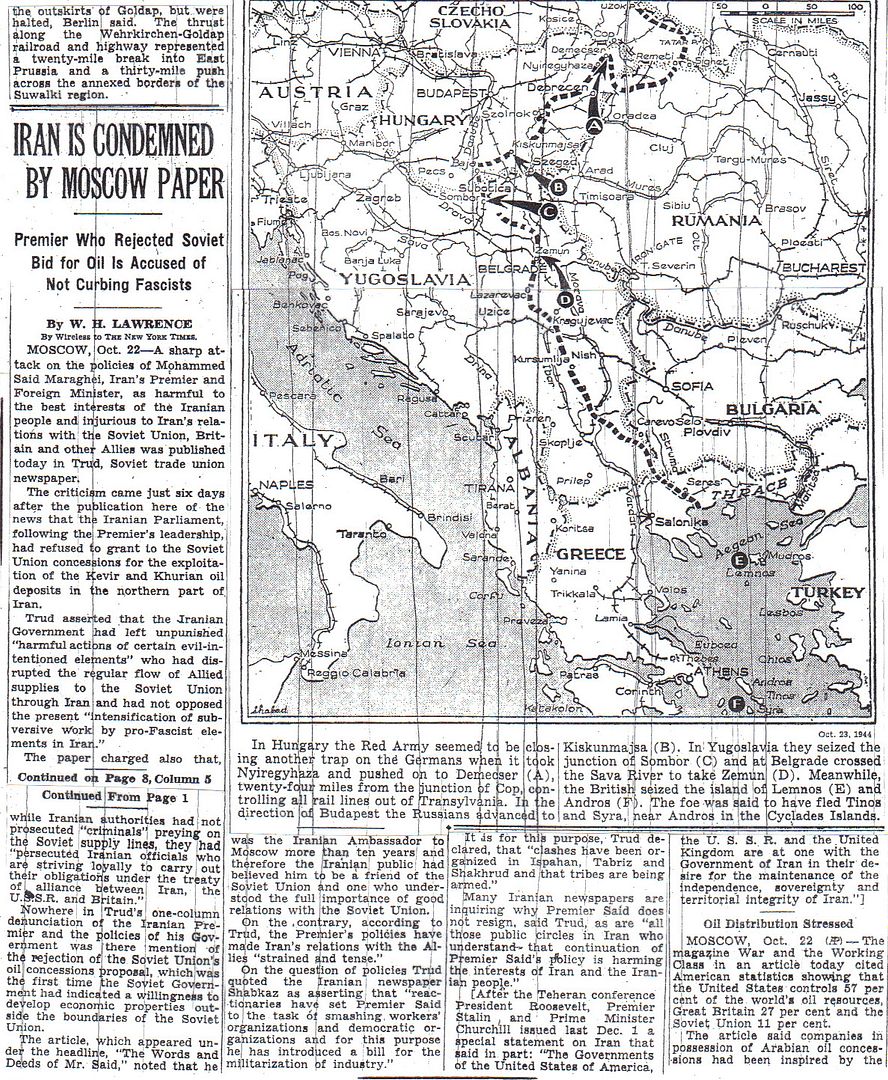

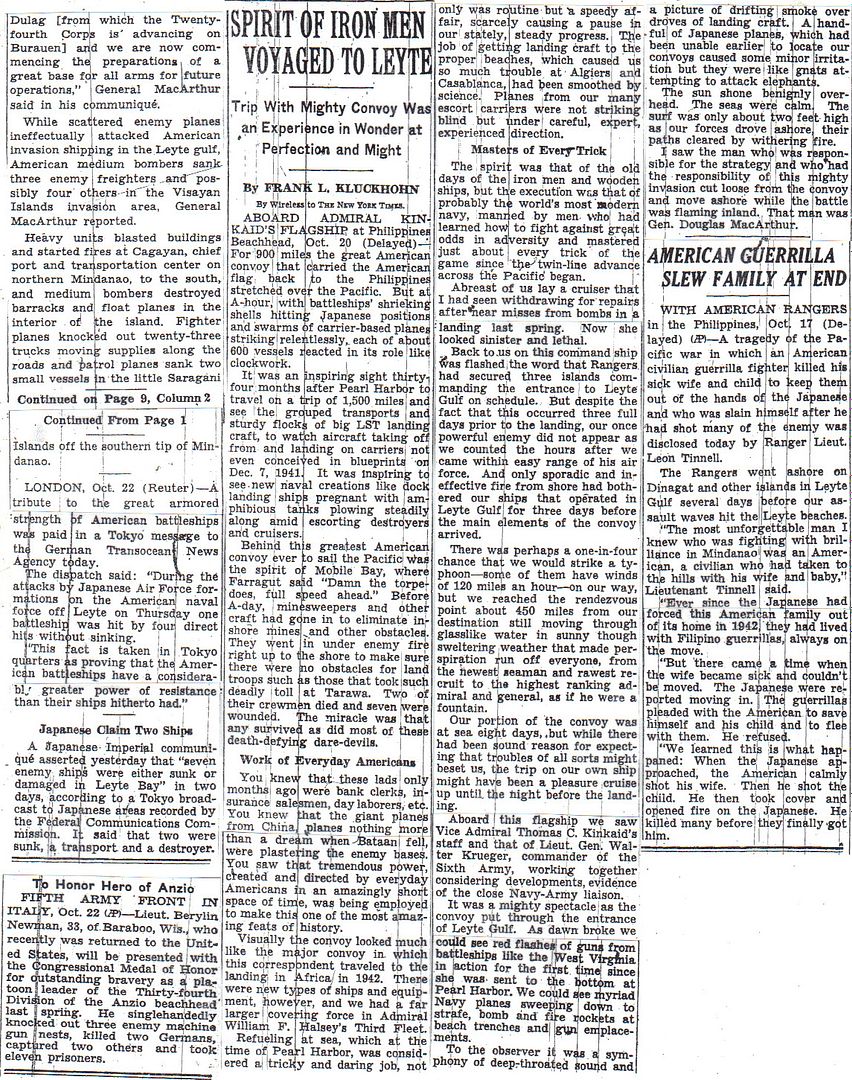


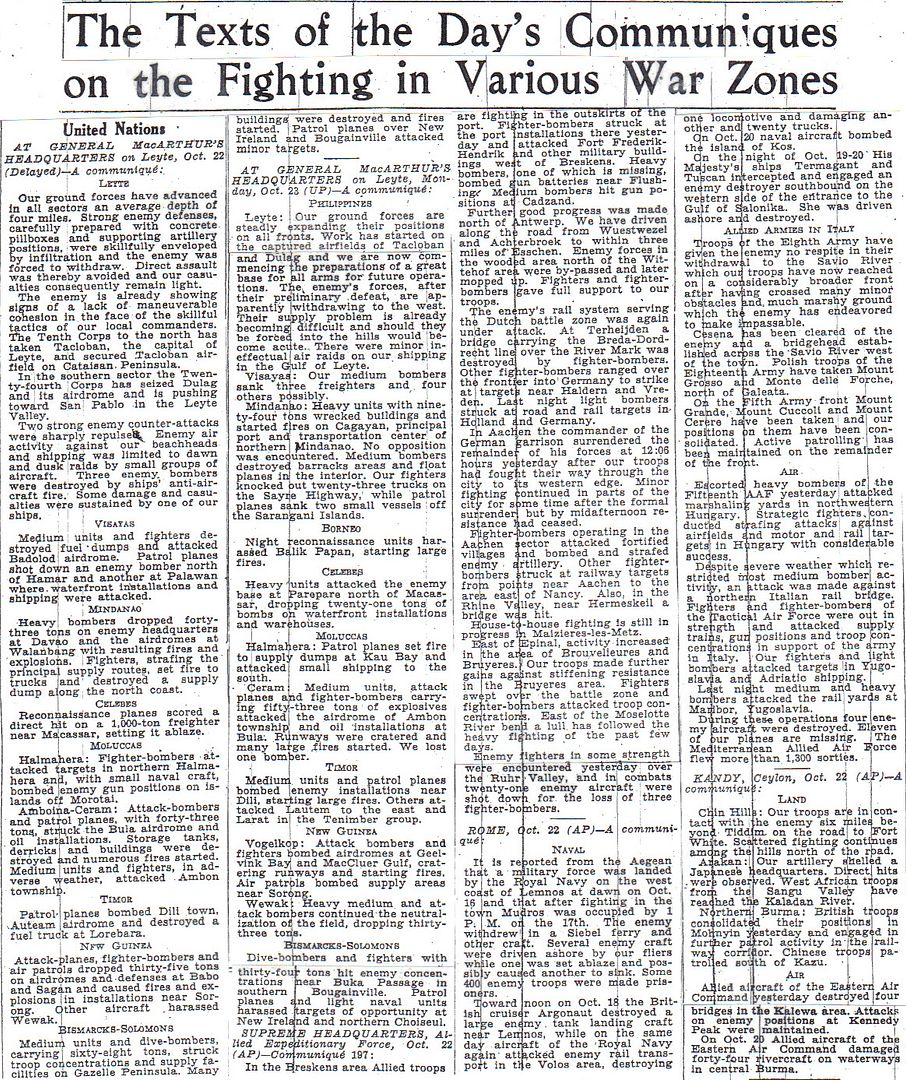
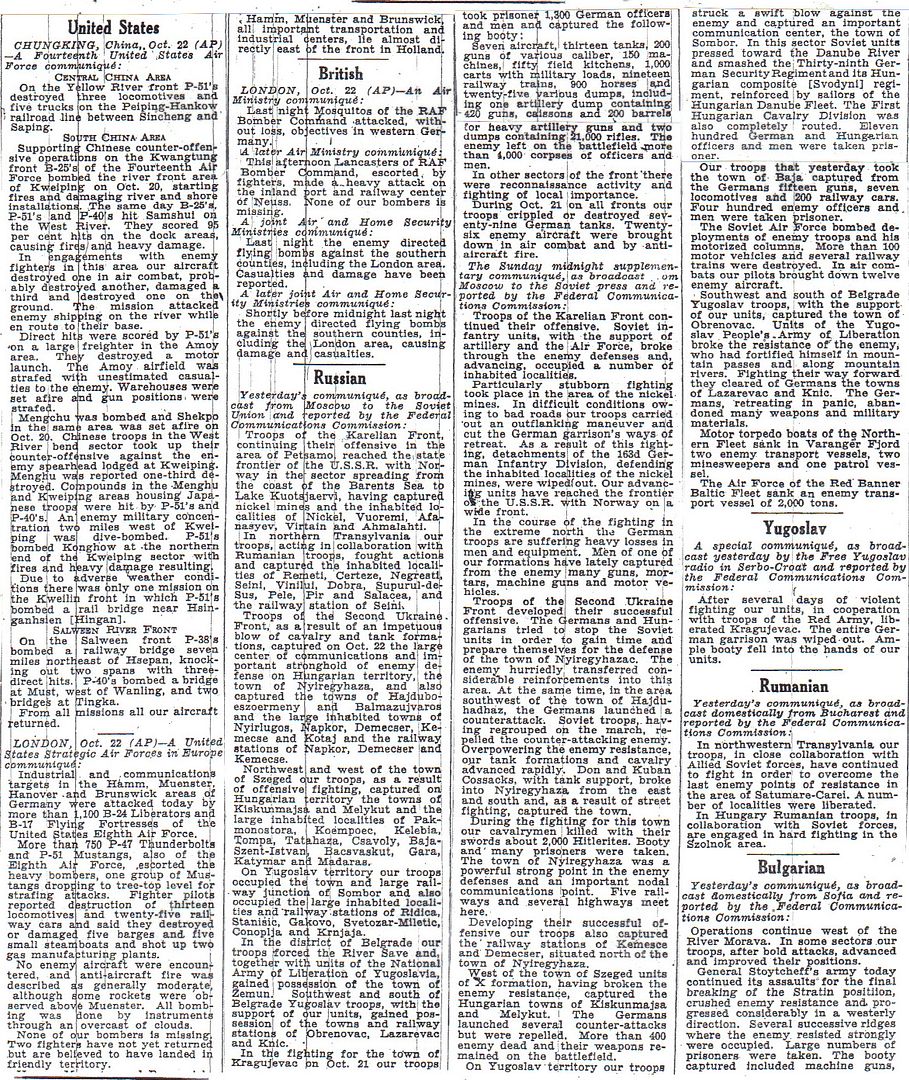
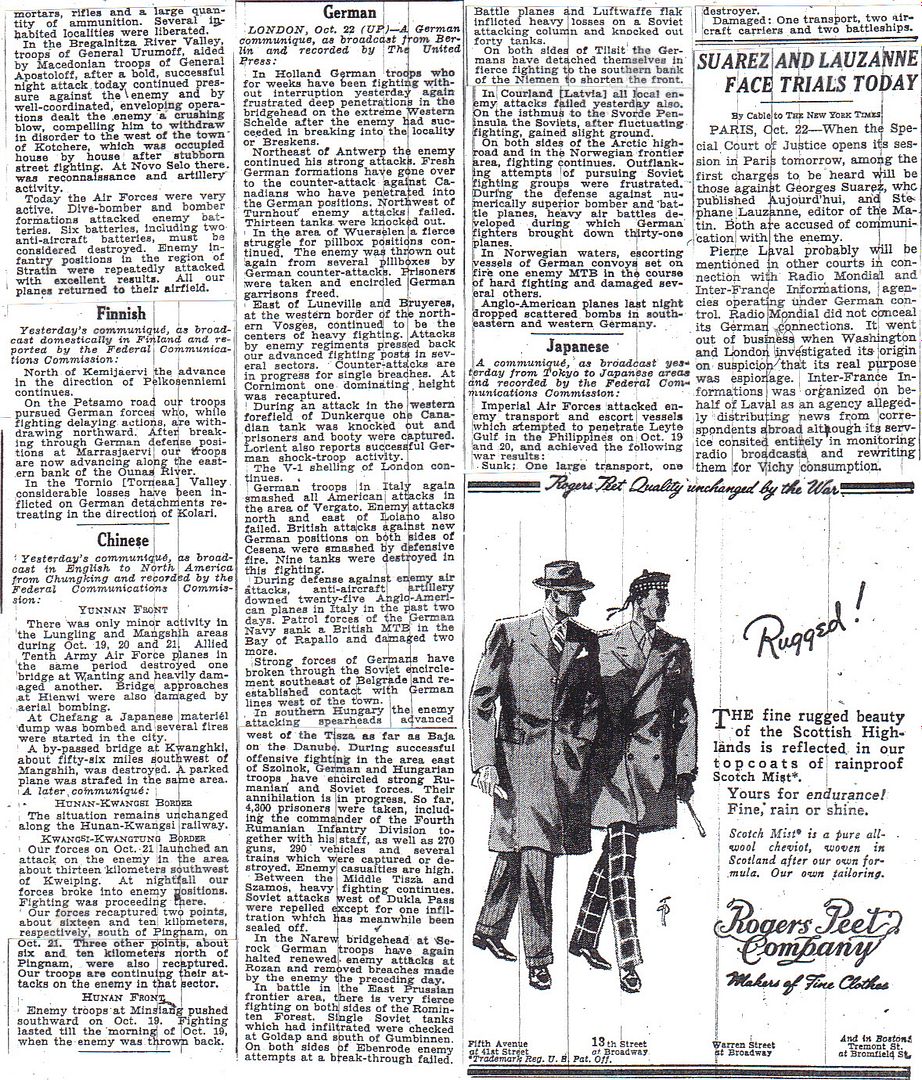
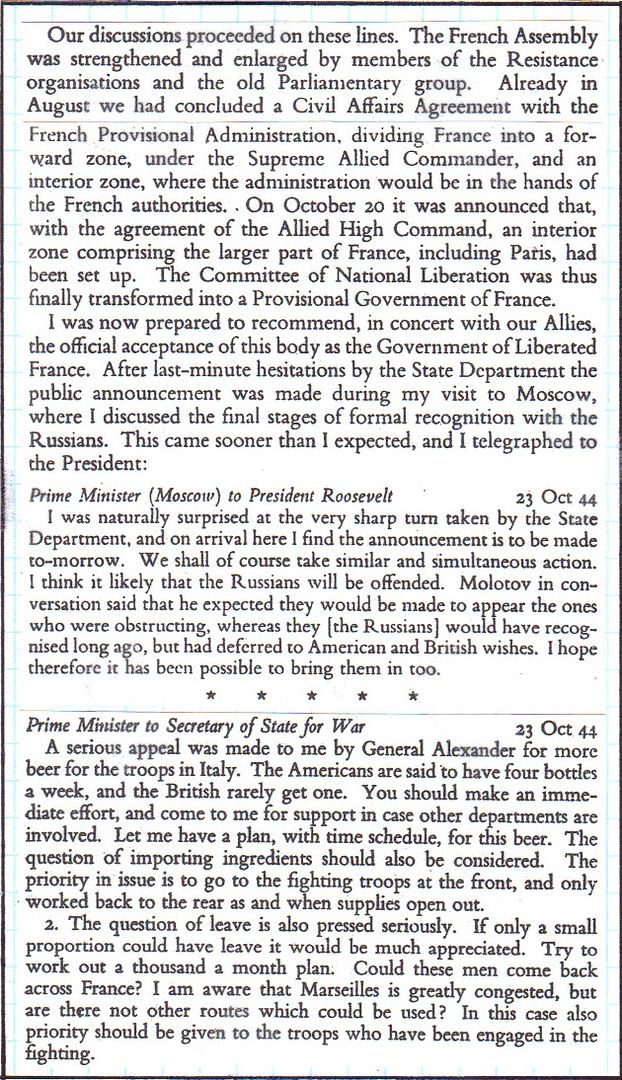
Winston S. Churchill, Triumph and Tragedy
http://www.onwar.com/chrono/1944/oct44/23oct44.htm#
Germans joining the Volkssturm
Monday, October 23, 1944 www.onwar.com
In Berlin... The official German news agency reports that vast numbers of volunteers are joining the Volkssturm militia, including men older than the specified age group and boys younger than specified.
On the Eastern Front... Soviet forces now hold a 137 km frontage in East Prussia.
In Finland... Soviet forces clear the Petsamo region.
On the Western Front... The Canadian 1st Army continues the battle of the Scheldt. British 4th Armored Division attacks at the east end of the Beveland Isthmus. To the south, forces of the US 7th Army are engaged around Bruyeres and St. Die.
In Italy... Troops of the US 5th Army capture Monte Salvaro.
In the Philippines... The US 1st Cavalry Division (part of US 10th Corps) attacks northwest form Toclaban. To the right, armored forces attached to 7th Division (part of US 24th Corps) capture Burauen. At sea, the Japanese Center Force (Kurita) is sited off Palawan by two American submarines. The Japanese lose 2 cruisers to the submarines and sink 1 American submarine. The report of the sighting, however, alerts the three groups of Task Force 38, east of the Philippines.
For some reason, I feel the urge to run out and buy a Buick ...
http://www.etherit.co.uk/month/9/23.htm
October 23rd, 1944 (MONDAY)
UNITED KINGDOM: London: The Allies recognise de Gaulle’s cabinet as the provisional government of France.
Destroyer HMS Zodiac commissioned.
WESTERN EUROPE: Weather prevents all USAAF Ninth Air Force commands, including the 9th Bombardment Division, from flight operations.
BELGIUM: The British 4th Armored Division begins an attack from the east end of the Beveland Isthmus.
NETHERLANDS: In the Canadian First Army’s British I Corps area, the U.S. 104th Infantry Division, inexperienced in combat, begins moving into line along the Antwerp-Breda highway between the 49th Division and the Polish 1st Armored Division. On the left flank of the corps, the Canadian 4th Armoured Division swings west from Esschen toward Bergen-op-Zoom to seal off the Beveland Isthmus, along which the Canadian 2d Division of II Corps is preparing to drive.
Sicherheitsdienst (S.D. or security service of the SS) officer Herbert Oelschagel is murdered by the Dutch resistance in Amsterdam and the German reprisal is swift and severe. The next day, 29 civilians are arrested and pedestrians on the Apolloaan are forced at gunpoint to witness their execution. At the same time, several buildings are deliberately set on fire.
During the day, RAF Bomber Command sends 112 Lancasters to attack the Flushing battery positions; 92 bomb but visibility is poor and the bombing is scattered. Four Lancasters are lost.
FRANCE: Paris: Treason trials open, with a journalist sentenced to death for collaborating with the Nazis.
The US 7th Army is still fighting around Bruyeres and St. Dies.
General Dwight D. Eisenhower, Supreme Commander, Allied Expeditionary Forces, in a personal letter to Lieutenant General Jacob Devers, Commanding General 6th Army Group, order the Group to protect the southern flank of 12th Army Group in a coming offensive toward the Rhine River.
In U.S. Seventh Army’s VI Corps area, the 3d Infantry Division is meeting stronger resistance as it approaches Les Rouges Eaux, on the road to St Die. To the corps’ left, the180th Infantry Regiment, 45th Infantry Division, succeeds in establishing a bridgehead across the Mortagne River east of Fremifontaine, from which they will push northeast toward Raon-l’Etape. On the right flank, the 36th Infantry Division extends positions east of Bruyres to Biffontaine; a battalion of the 141st Infantry Regiment, attempting to secure the heights north of La Houssière, becomes isolated in Forêt Domaniale de Champ.
During the night of 23/24 October, the USAAF Eighth Air Force flies Mission 686: three B-17 Flying Fortresses and six B-24 Liberators drop leaflets over the country.
GERMANY: USAAF Fifteenth Air Force bombers hit five targets: 79 bomb the M.A.N. diesel engine factory at Augsburg; 67 bomb the BMW aircraft engine factory at Munich; 63 attack the Winterhafen oil storage facility at Regensburg; 34 bomb the industrial area at Plauen; and 32 bomb the marshalling yard at Rosenheim.
During the night of 23/24 October, RAF Bomber Command dispatches 1,055 aircraft, 561 Lancasters, 463 Halifaxes and 31 Mosquitos, to bomb to Essen; 955 bomb the city. This is the heaviest raid on this target so far in the war and the number of aircraft dispatched is also the greatest number to any target so far; five Lancasters and three Halifaxes are lost. The aircraft drop 4,538 tons (4 117 metric tonnes) of bombs. More than 90 per cent of this tonnage is high explosive and includes five hundred nine 4,000-pound (1 814 kilogram) bombs because it is now considered that most of the burnable buildings in Essen have been destroyed in earlier raids. The greater proportion of high explosive, against all the trends in earlier area-bombing raids, is now quite common in attacks on targets which has suffered major fire damage in 1943. Mosquitos are also sent to various targets: 32 hit Berlin, ten bomb Wiesbaden and two bomb Aschaffenburg
U-2534 laid down.
CZECHOSLOVAKIA: One hundred twenty five USAAF Fifteenth Air Force B-17 Flying Fortresses bomb the Skoda armament factory at Pilsen. Two aircraft are lost.
NORWAY: U-256 stricken in Bergen, Norway. Captured there and cannibalized. Broken up later.
FINLAND: Russian units clear the area around Petsamo.
SWEDEN: An international Jewish conference held at Stockholm thanks the Finnish government and people for their attitude towards the Jews during the war.
ITALY: In the U.S. Fifth Army area, the South African 6th Division, attacking in force toward Mt. Salvaro, drives to the summit; elements to the right begin assault on Mt. Termine. In the II Corps area, the Germans counterattack and recover Hill 459 from the 85th Infantry Division. Elsewhere on the right flank of corps, counterattacks are repulsed and bypassed pockets cleared. At night, the 2d Battalion of the 351st Infantry Regiment, 88th Infantry Division, attacks toward Vedriano and takes Vedriano by dawn of 24 October. The 133d Infantry Regiment, 34th Infantry Division, seizes Mt. Belmonte. In British XIII Corps area, 78th Division, renewing their assault on Mt. Spadura with the 11th and 38th Brigades, clears this feature. The 1st Division takes Mt. Cornazzano without opposition and gains ground north of Mt. Ceco. The 21st Brigade, Indian 8th Division, seizes Mt. Giro and pushes on toward Mt. Colombo; the 17th Brigade takes Mt. Casalino.
In the British Eighth Army’s V Corps area, the Indian 10th Division reaches the crest of Mt. Cavallo ridge, which extends northward to Bertinoro, commanding Highway 9; the Germans begin to pull back. The Savio River is subsiding and reinforcements are crossed into the 4th Division’s bridgehead. In the Canadian I Corps area, the Canadian 1st Division maintains a bridgehead across the Savio River but is unable to strengthen it. The 11th Brigade, Canadian 5th Armoured Division, reaches the Savio River.
Bad weather grounds USAAF Twelfth Air Force medium bombers; fighters and fighter-bombers, although cancelling many operations, cause much damage to transportation, destroying or damaging numerous locomotives, railroad cars, and motor transport, and damaging vessels in the Savona, Turin, Padua, and Genoa areas.
USAAF Fifteenth Air Force bombers hit various targets: 27 bomb the railroad in the Brenner Pass; 19 hit the industrial area of Trieste; 12 attack a railroad bridge at Casarsa; two hit the railroad bridge at Latisana; one attacks the railroad at Treviso; and 28 bomb targets of opportunity.
During the night of 23/24 October, USAAF Twelfth Air Force A-20 Havocs attack targets of opportunity in the Po Valley.
CHINA: Three USAAF Fourteenth Air Force B-25 Mitchells knock out a bridge at Lobochai while seven P-40s hit trucks and locomotives nearby; six B-25 Mitchells and 11 P-51 Mustangs hit the town area of Menghsu; 50+ P-40s and P-51s hit small towns and other targets of opportunity in the Menghsu area; 40+ others attack shipping, bridges, and general targets of opportunity around Anfu, Kweiping, Shepchung, Kuanyang, Ssuwangshu, Mangshih, Chefang, Panghkam, Takhing, Tanchuk, Dosing, Wuchou, and Tengyun and Wanling, Burma.
BURMA: Twenty USAAF Tenth Air Force P-47 Thunderbolts hit Japanese concentrations at Nanhlaing and Kyungyi while 16 support ground forces at Mawlu and Henu and in nearby areas. A bivouac area south of Indaw is attacked by four fighter-bombers while seven knock out a bypass bridge at Panghkam while three B-25 Mitchells blast train cars and sidings at Kyaukme, three hit a nearby motor pool, two hit a motor pool at Namhsim, and one blasts a rail line at Nawngpeng.
JAPAN: In the Kurile Islands, three USAAF Eleventh Air Force B-24 Liberators hit Kashiwabara on Paramushiru Island; three more B-24s bomb Otomari and fly a photographic mission over Onnekotan Island; and five B-25 Mitchells bomb the Asahi Bay area.
VOLCANO ISLANDS: During the night of 23/24 October, a USAAF Seventh Air Force B-24 Liberator bombs Iwo Jima.
COMMONWEALTH OF THE PHILIPPINES: On Leyte, at a ceremony in Tacloban, General Douglas MacArthur, Supreme Commander, Southwest Pacific Area, restores Philippine Civil Government under President Sergio Osmena. In the X Corps area, the 8th Cavalry Regiment, 2d Brigade, 1st Cavalry Division, charged with the task of securing control of San Juanico Strait between Leyte and Samar and cutting off Japanese movement, begins operations toward this end. Elements of the regiment move to the Diit River and secure a bridge in preparation for drive on Santa Cruz, on Carigara Bay. A Japanese party raids Palo at night, using Filipinos to deceive the Americans, but is dispersed and leave behind 60 dead. The 1st Battalion, 34th Infantry Regiment, begins an attack on Hill C, blocking the passage into the Leyte Valley on north side of Highway 2 at western edge of Palo, a strongly defended feature. In the XXIV Corps area, the 96th Infantry Division is facing an acute supply shortage, which limits forward movement. The 383d Infantry Regiment, less the 1st Battalion, attacks at noon, crosses the Guinarona River and reaches positions west of Pikas. Tanks of 767th Tank Battaion act as a spearhead for the 7th Infantry Division as it continues a drive on Burauen in an effort to take San Pablo Airfield. The tanks arrive at Burauen and scatter the Japanese forces. Infantrymen drive through Julita and San Pablo and seize San Pablo airfield. .
USAAF Far East Air Force aircraft attack vehicles and small vessels in the Mindanao area while B-25 Mitchells attack small shipping in the Sulu Archipelago.
USN submarine USS Nautilus (SS-168) lands men and supplies on the east coast of Luzon; she will repeat the operation on 24 and 25 October.
Admiral Kurita’s naval force is sighted by submarines, USS Darter and USS Dace off Palawan. They pass the sighting info on and proceed to sink the Japanese heavy cruisers ATAGO and MAYA and hit the cruiser TAKAO. Aircraft from TF 38 will be waiting as he comes into range.
EAST INDIES: In the Netherlands East Indies, USAAF Far East Air Forces B-24 Liberators and P-38 Lightnings maintain shipping sweeps in the Makassar area on the southwestern tip of Celebes Island. B-25 Mitchells, A-20 Havocs, and fighter-bombers hit oil storage at Boela and Amboina town on Ceram Island and two airfields and other targets in the Ceram Island area. Fighter-bombers over Halmahera Island hit scattered bivouacs.
NEW GUINEA: In Dutch New Guinea, USAAF Fifth Air Force fighter-bombers hit Sagan while A-20 Havocs support ground forces further east in the Sawar Rive-Orai River area.
CAROLINE ISLANDS: In the Palau Islands, Antitank and Cannon Companies relieve the infantry of responsibility for eliminating the few remaining Japanese on Angaur Island.
Eight USAAF Seventh Air Force 8 B-24 Liberators from Guam Island bomb Yap Island.
SOLOMON ISLANDS: The USN’s Special Air Task Group One (STAG-1) operations continue in two missions; three TDR-1 target drones each guided by TBF-1C Avengers are flown against beached Japanese ships in Moisuru Bay and off the south end of the Kahili airstrip on Bougainville Island. In the first mission, one TDR scores a direct hit on “Kahili Maru” the beached Japanese freighter serving as an antiaircraft gun site off the Kahili airstrip; in the second, one TDR scores a direct hit on “Kahili Maru” while another hits a beached merchantman in Moisuru Bay.
PACIFIC OCEAN: The BATTLE OF LEYTE GULF opens. While the submarine USS Darter (SS-227) continues to trail Japanese ships detected the previous day, submarine USS Bream (SS-243) torpedoes heavy cruiser HIJMS Aoba in the South China Sea about 85 nautical miles (157 kilometers) west-southwest of Manila, Luzon, Philippines Islands, in position 14.06N, 119.37E. Subsequently, USS Darter and Dace (SS-247) attack what proves to be the “Center Force” (Vice Admiral KURITA Takeo), one of the three main bodies of the Japanese fleet moving toward Leyte in a major effort to drive U.S. forces from the Philippines. In the South China Sea, USS Dace sinks heavy cruiser HIJMS Maya about 84 nautical miles (156 kilometers) west of Puerto Princesa, Palawan, Philippine Islands, in position 09.28E, 117.20E, while Darter sinks heavy cruiser HIJMS Atago and damages her sistership HIJMS Takao about 94 nautical miles (174 kilometers) west-southwest of Puerto Princesa in position 09.24N, 117.11E. (Skip Guidry and Jack McKillop)
USS Tang (SS-306) sinks a tanker at 25- N, 122- E.
0100 hours: USS Croaker (SS-246) sinks a cargo ship at 35-30 N, 126-15 E.
0400 hours: USS Tang (SS-306) sinks three cargo ships and one transport at 24-49 N, 120-26 E.
0600 hours: USS Darter (SS-227) sinks a heavy cruiser (Takao) at 09-24 N, 117-11 E west of Palawan.
0600 hours: USS Dace (SS-247) sinks a heavy cruiser (Maya) at 09-22 N, 117-97 E west of Palawan.
1700 hours: USS Sawfish (SS-276) sinks a seaplane tender at 18-58 N, 118-46 E.
2400 hours: USS Snook (SS-279) sinks a tanker at 19-46 N, 118-30 E. (Skip Guidry)
CANADA: Corvette HMCS Trail completed forecastle extension refit Liverpool , Nova Scotia.
U.S.A.: Escort carrier USS Sicily laid down.
Coast Guard-manned Army vessel FS-385 was commissioned at Decatur with LT Peter Marcoux, USCG, as commanding officer. She was assigned to and operated in the Pacific area during the war.
To paraphrase Oddball (as somebody was doing the other day), an M-18 Hellcat can give you an edge in your morning commute.
Some years back there was an M-18 Hellcat on Ebay IIRC. The M-18 had been re-powered with a T-34 tank engine:-( The 90mm gun had been demilled as well. But for my morning commute I would prefer the German SdKfz 234 Puma Panzerspahwagen!!!
Short You Tube video of a R/C Sdkfz 234 in action
http://www.youtube.com/watch?v=BubKLH8OXS4
BWAAA HAAA HAA HA
Regards
alfa6 ;>}
"The determined, energetic efforts of young Swedish diplomat Raoul Wallenberg saved thousands of Hungarian Jews from certain death in the gas chambers of Auschwitz.
"Sent to Budapest by the Swedish Foreign Ministry, Wallenberg worked to save the city's remaining 200,000 Jews from planned deportations in July 1944.
He issued thousands of special Swedish Embassy-stamped 'protective passports' to Hungarian Jews.
Armed with funds supplied by the War Refugee Board, Wallenberg also bought property in Budapest, which he turned into 'safe houses' for those rescued from transports.
In organizing a network of hundreds of young Jewish agents, he managed the distribution of food and medicine to Jews taking refuge in those shelters.
"Using bluff and diplomatic credentials, Wallenberg even pressured the SS into turning over to him some prisoners already on board deportation trains.
As Adolf Eichmann initiated the death marches of thousands of Jews toward the Austrian border, Wallenberg pursued the departing columns, winning the release of many of those in possession of the Swedish passports.
In early 1945, as the Soviet Army neared Budapest, he dissuaded the SS commander from carrying out an ordered massacre of Jews still in the city.
"After Budapest's liberation, Wallenberg disappeared, presumably arrested by the Soviets on espionage charges. His fate remains a mystery."
Note the NYT still calls them "robot bombs", a term which is never used today.
V-1 flying bomb, buzz bombs & doodlebug, as well as cherrystone (Kirschken) & maybug (Maikafer) in German, are the accepted terms.
No clue yet as to when usages changed.
Which didn't help much, since Halsey thought the middle force turned back, which led to his decision to go chasing north with his entire fleet after what turned out to be the decoy Japanese force of virtually powerless carriers. Thereby leaving the San Bernardino Straight wide open.

Things are starting to get a little warm in Rastenburg
Raoul Wallenberg - able to overcome the Nazis but not the Bolsheviks. Russia rolling over Germany from the east was like going from the frying pan into the fire.
(Page 13 NYT): This “Hell on Wheels” Harmon sounds like he could give “Old Blood and Guts” Patton a run for his money.
Makes me wonder what Harmon’s role was later when reinforcements were needed to fight the German counter-offensive in the Ardennes.
EV, I assume you’re referring to Bull’s Run? Nimitz, King and Kincaid believed, based on a radio message received from Halsey, that if Halsey exercised his discretion to chase Ozawa’s decoy force he would form “Task Force 34” to stay behind and cover the San Bernardino Strait. As it happened, he never did, and the Strait was wide open, exposing the ships at the landing beaches.

Canada Ping!
Disclaimer: Opinions posted on Free Republic are those of the individual posters and do not necessarily represent the opinion of Free Republic or its management. All materials posted herein are protected by copyright law and the exemption for fair use of copyrighted works.